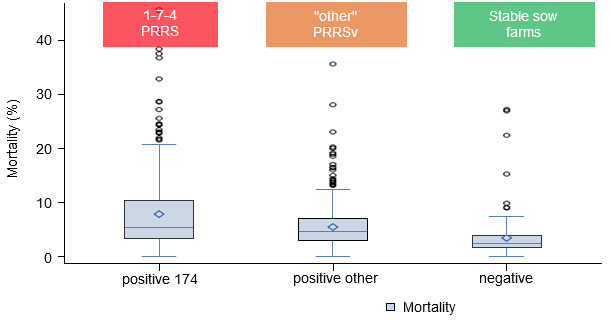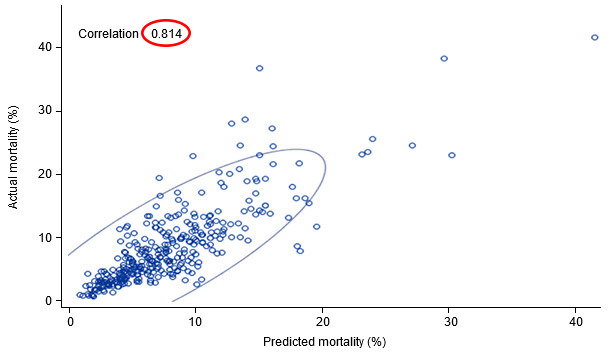Background
PRRS continues to be one of the most economically important swine diseases worldwide, impacting reproductive and growing pig performance of affected pig populations.

Coinciding with emergence of PRRSv strains belonging to the RFLP pattern 1-7-4, there was a significant increase of wean-to-finish (WTF) mortality in a particular pig production system in the mid-western United States. Thus, the perception was that PRRSv belonging to the 174-family had an increased impact on pig health compared to other PRRSv strains. The production system consisted of multiple sow farms, supervisors, feed mills and other variables that could have played a role. Sow farms were PRRSv-positive or PRRSv-stable at the time of this study. The relative effect of each variable on mortality was unknown.
Objective and data
A field epidemiology investigation was conducted to (1) understand the drivers of WTF mortality and (2) to assess the 174-PRRSv role on mortality and profit per head.
A database was assembled with a) close-out data from single sourced WTF flows, b) linked sow farm weekly status from the University of Minnesota swine health monitoring project (SHMP), c) management parameters and d) selected sow farm parameters. The final database had 462 closeouts, representing 2.3 Million pigs from 33 sow farm sources.Statistical analysis were conducted on the dataset using multilevel regression models.
Results and discussion
WTF mortality had geometric mean of 6.5% (95% CI 1.2% and 30%). The following factors were not significantly associated with changes in mortality: pen density, average parity on week of weaning, average overall herd parity, number of empty days before loading in pigs.
Incoming gilt type (bred vs 270lb) and sow farm PEDv status (positive unstable, positive stable with vaccination, negative) had a trend of association with mortality (P between 0.05 and 0.20).
Feed mills (n=12), supervisor (n=30), percentage of barn utilization, sow farm PRRSv status (positive unstable, positive stable with vaccination, negative), start weight and PRRSv type (174 vs other) and start quarter were significantly associated with mortality.
The final model included: PRRS virus (174, other, none); Weeks on PRRSv status (nested with source); Start quarter; Gilt type; Supervisor; Feed Mill; PEDv status; Pct utilization WTF. The model predicted mortality and profit with a high precision (R2 = 0.81 and R2 = 0.78 respectively).
The adjusted impact of 174 PRRSv on mortality was of additional 4.8%. The adjusted impact on profit was a reduction of $ 2.87 per head.


Figure 1. Closeout mortality by PRRSv status.

Figure 2. Actual vs. predicted closeout mortality (95% prediction ellipse).
Final comments
This was a field epidemiology investigation designed to understand factors associated with an acute population problem by gathering multi-discipline information including from clinical veterinary medicine, laboratory diagnostics and basic epidemiology (time/subject/place). The data was evaluated critically and generated applied information (drivers of WTF mortality) to improve economics of pig production. More specifically, it estimated the relative importance of each investigated variable on the outcomes (mortality and profit per head).
The magnitude of pathogen virulence under field conditions (e.g. impact on economics of pig production) influences directly models to estimate return over investment (ROI) of health intervention options such as vaccination or changes in pig flow. On this study we developed a method to quantify the relative economic importance of pig health status at placement by specific pathogens (PRRSv and PEDv) and estimated the effect of a specific type of PRRSv at a specific production system.
Acknowledgements
Ian Levis and Katie Wedel for providing and agreeing to share production system data and Carl Betlach for providing SHMP data.






